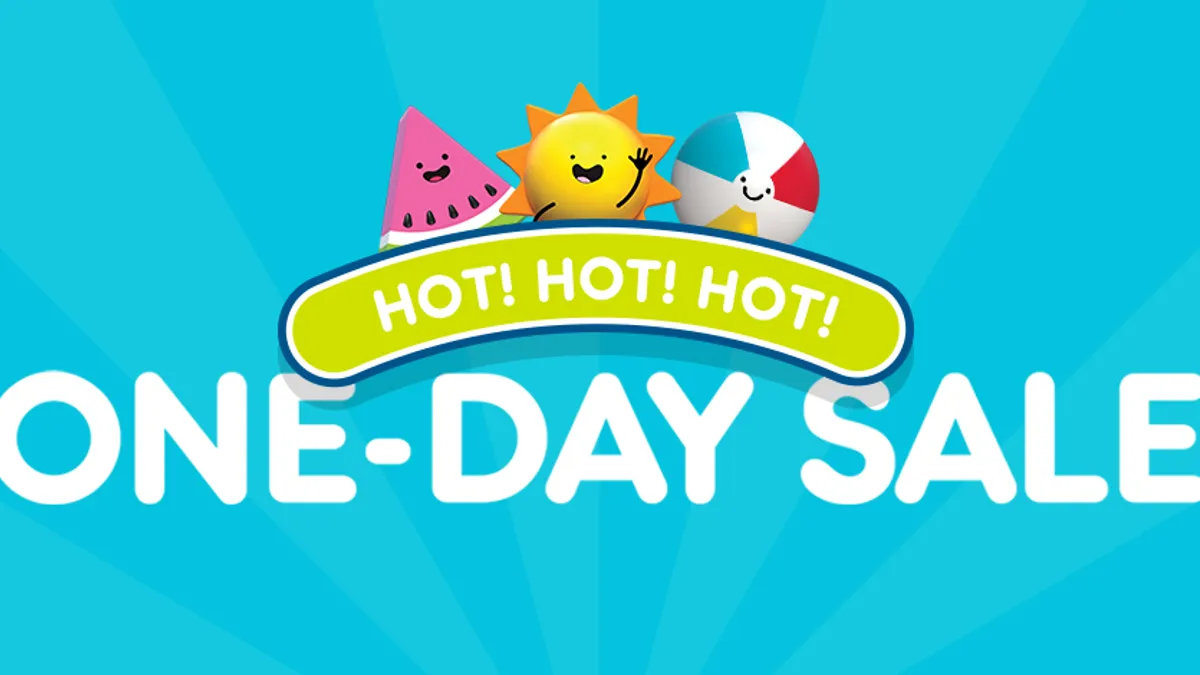Dive Brief:
-
Target on Friday announced an "epic" one-day sale on Tuesday, which just also happens to be Amazon’s Prime Day.
-
In a blog post, the mass merchant emphasized that the online sales event is "for everybody — no membership required," an apparent dig at Amazon’s requirement that Prime Day shoppers must have a Prime membership.
-
Deals of the day include a free six-month membership for same-day delivery, shopped by Shipt for those spending $100 on Target.com, 30% off Target private label home brands, 25% off beauty and personal care, and free shipping on next-day Target Restock delivery orders on July 17, among other offers.
Dive Insight:
Target never uses the words "Prime Day" to describe its one-day sale on Tuesday, but it may as well have. Indeed, more than half (54%) of retailers are refusing to cede the event to Amazon and are staging big sales events of their own, according to research from coupon site RetailMeNot.
Retailers have little choice but to offer their own deep discounts on the day, which is leading to a "Black Friday in July" phenomenon, Moody's Lead Retail Analyst Charlie O'Shea said in comments emailed to Retail Dive on Monday. Big-box retailers like Target, Macy's, Nordstrom, Best Buy and Walmart are all among those offering deals.
Other retailers are boldly poaching Amazon's word, with nearly half (47 of 100) of the largest non-Amazon retailers offering limited-time sales or messaging that included the word ‘Prime,’ according to a study from global consulting firm AlixPartners. Shoppers have responded, and are increasingly viewing the day as a general retail holiday, not reserved for Amazon.
A majority (63%) of consumers say they plan to shop Amazon on Prime Day this year, (half said they made a purchase there last year) and 39% say they’ll look for bargains at other retailers (up from 31% who said so last year), according to AlixPartners.
That's "a tremendous opportunity" for other retailers that figure out how to take advantage of it, according to David Bassuk, AlixPartners global co-head of the retail practice and managing director.
And retailers are reaping the benefits. Prime Day last year stoked non-Amazon brands' and retailers' sales by an average 57%, according to online ad firm Criteo. Amazon's own sales increased 60% during 2017's Prime Day, and delivered $2.9 billion in sales, according to e-commerce analytics company Profitero.
"'Fabricated' online shopping events like Prime Day are proven to drive significant spikes in traffic and sales volume during times of the year that historically may not have been seasonal peaks," Profitero said in a blog post. But discounts aren't the only draw. In fact, the most common Prime Day discount rate of 20%-30% actually saw the lowest sales lift; discounts between 10%-20% brought greater sales than the 20%-30% and 30%-40% discount bracket, according to Profitero.















